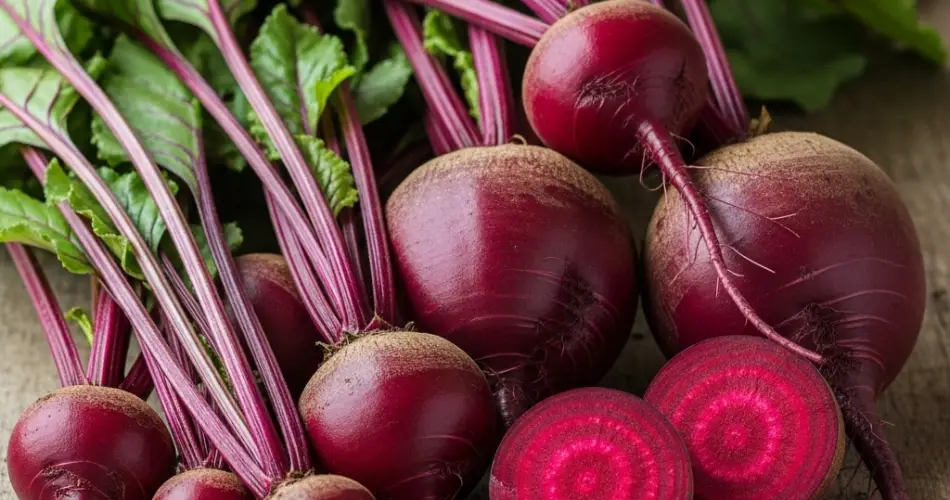Growing beets in pots is a practical and rewarding way to enjoy homegrown vegetables, even if you don’t have access to a traditional garden. Beets are root vegetables that thrive in containers as long as a few key growing conditions are met. They’re not only valued for their vibrant roots but also for their edible greens, which are rich in nutrients and flavor.
This guide covers everything you need to know to grow healthy, sweet beets in pots—from choosing the right container to harvesting your crop at just the right time.
Why Grow Beets in Pots?
Beets are an excellent candidate for container gardening. They have a relatively shallow root system, making them suitable for pots, window boxes, and raised containers. When grown in loose, fertile soil with good drainage, beets can develop smooth, round roots that are free from deformities or tough skins.
Container gardening also gives you better control over soil quality, spacing, and sunlight exposure, which are all critical for growing perfect beets.
Choosing the Right Variety
There are several beet varieties to choose from, each offering unique flavor, size, and color. For container gardening, consider compact or fast-maturing types:
-
‘Detroit Dark Red’ – A classic variety that produces round, deep-red roots.
-
‘Chioggia’ – Known for its striking pink-and-white rings inside.
-
‘Golden’ – Milder and sweeter, with golden-yellow roots.
-
‘Baby Beets’ – Ideal for small containers and quicker harvests.
Whichever variety you choose, make sure it’s suitable for your climate and growing season.
Best Container for Beets
Beets need depth to develop their roots properly. Use a container that’s at least 10–12 inches (25–30 cm) deep. A pot that’s too shallow can lead to stunted or deformed roots.
Here are some suitable options:
-
Large plastic or clay pots
-
Fabric grow bags
-
Wooden boxes or crates
-
Window planters with sufficient depth
Ensure your container has good drainage holes at the bottom to prevent waterlogging and root rot.
Soil Preparation
Beets prefer loose, well-draining soil that is rich in organic matter. A good mix includes:
-
2 parts potting soil
-
1 part compost
-
1 part perlite or coarse sand (for better drainage)
Avoid soils with large clumps or rocks, as these can interfere with root development. The ideal soil pH for beets is between 6.0 and 7.0.
Planting Beets in Pots
1. Sowing Seeds
Beet seeds are actually seed clusters, meaning one “seed” can produce multiple seedlings. Sow seeds ½ inch (1.25 cm) deep and about 2 inches (5 cm) apart. Water gently after planting.
2. Thinning
Once seedlings are about 2–3 inches (5–8 cm) tall, thin them to allow 3–4 inches (7–10 cm) of space between each plant. Thinning is crucial—it allows the roots room to develop and prevents overcrowding. You can use the thinnings as microgreens or salad greens.
Sunlight and Positioning
Beets need at least 6 hours of sunlight daily to grow well. Place your pots in a sunny location such as a balcony, patio, or rooftop. In hot climates, some afternoon shade can help prevent leaf scorch and stress on the plants.
If you’re growing indoors or in a shaded area, consider using grow lights to supplement natural light.
Watering and Feeding
Beets need consistent moisture to develop juicy, tender roots. Water when the top inch of soil feels dry, but avoid overwatering. Inconsistent watering can lead to split roots or poor flavor.
For fertilizing, use a balanced, low-nitrogen fertilizer once or twice during the growing season. Too much nitrogen encourages leafy growth at the expense of root development.
Common Problems and Solutions
-
Leggy plants with small roots: Usually caused by lack of sunlight or overcrowding.
-
Poor germination: May be due to planting too deep or using old seeds.
-
Forked or misshapen roots: Often the result of compacted soil or improper thinning.
-
Pests: Leaf miners and aphids can be common. Handpick pests or use neem oil spray as needed.
Harvesting Beets
Beets are typically ready to harvest 50–70 days after planting, depending on the variety. You can harvest earlier for baby beets or wait until the roots are about 1.5–3 inches (4–8 cm) in diameter.
To check, gently brush soil away from the top of the root. If it’s the desired size, grasp the base of the greens and pull upward gently.
Don’t forget: beet greens are edible too! You can harvest a few leaves at a time once the plants are about 4–6 inches tall. Just avoid taking more than a third of the foliage so the plant can continue to grow.
Final Tips
-
Rotate your beet crops if growing multiple rounds to avoid soil fatigue.
-
Clean and store harvested beets in a cool, dry place or refrigerate for several weeks.
-
For a steady supply, plant in batches every two to three weeks during the growing season.
Beets grown in pots not only save space but offer a colorful, nutrient-rich harvest you can enjoy fresh from your balcony or patio. With proper care, your container beets will grow smooth, sweet, and perfectly round—proving that a full garden isn’t necessary to enjoy homegrown success.



